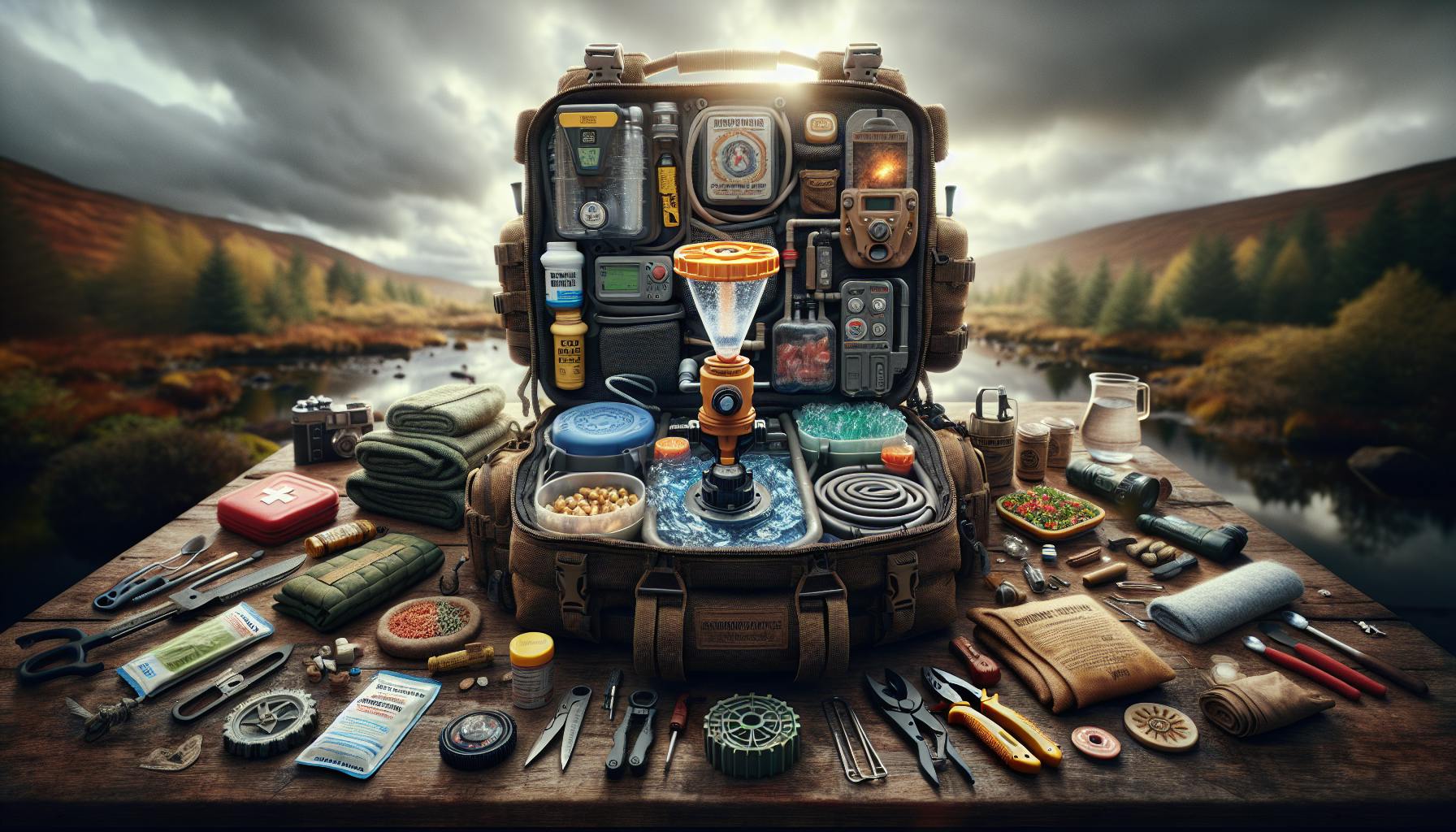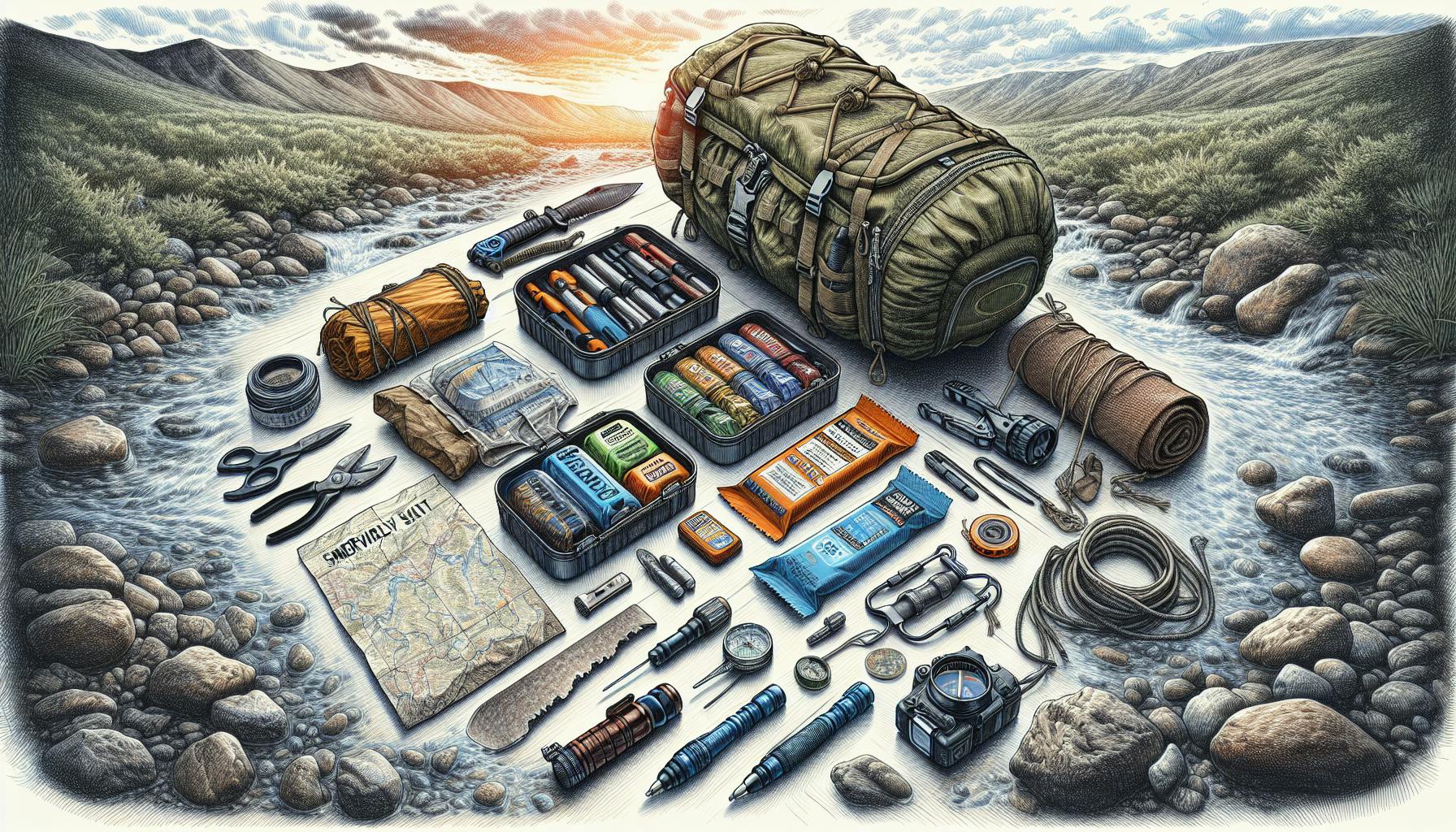Introduction to SHTF Planning
SHTF (shit hits the fan) is a term that refers to a major disaster or societal collapse that disrupts normal life. Having a comprehensive SHTF plan is crucial for being prepared when the unexpected happens. This guide will provide essential information on key areas like food, water, shelter, security, and medicine to help you create a custom SHTF plan for your household's needs. Follow these tips to get prepared, and refer back to this guide regularly to update your plan as your situation changes.
Assessing Your Basic Needs
- Take stock of your current food reserves and estimate how long supplies would realistically last in an emergency situation. Prioritize stocking up on long shelf-life items like Mountain House freeze dried foods, Augason Farms dehydrated meals, and Wise Company emergency food buckets.
- Determine nearby water sources you could utilize like wells or rainwater collection systems. Research filtration and purification options like LifeStraw personal water filters and Berkey water purification systems.
- Review your current shelter/home and look for weak points. Reinforce doors, windows, and entrances with products like 3M security film and StrikeMaster II steel doors.
- Consider alternative power sources like Goal Zero Yeti solar generators and Generac home standby generators to prepare for extended blackouts.
- Inventory medical supplies, prescriptions, and first aid items. Stock up on critical medications and trauma supplies like QuikClot gauze.
Gathering Critical Supplies
- Stock up on long shelf-life foods like rice, beans, canned goods, honey, and freeze-dried meals. Build at least a 2 week supply of 3,000 calories per person daily.
- Store a minimum 2 week supply of water for each person and pet. Calculate 1 gallon per person daily, so 14 gallons per person minimum.
- Obtain camping gear, warm clothing, and essential off-grid tools like tents, sleeping bags, wool socks, manual can openers, and crank radios.
- Purchase backup radios, flashlights, batteries and other essential electronics. Redundancy is key - have multiple light sources and communication devices.
- Get specialized first aid items like sutures, antibiotics, scalpels, trauma gear. Aim for at least a basic trauma kit for each family member.
Enhancing Home Security
- Install heavy duty locks, 3M security window film, and Steel Safe strike plates on doors to fortify entry points.
- Keep fence lines clear and add motion-sensor lighting around the property for better monitoring. Consider Arlo Pro wireless security cameras.
- Get a guard dog or camera system like the Ring Spotlight Cam for 24/7 surveillance around the perimeter.
- Safely store firearms and ammunition. Train regularly to keep skills sharp.
- Build an underground bunker or safe room if threat levels become severe.
Establishing a Communication System
- Invest in long-range two-way radios like the Motorola T800 to stay in contact locally when cell networks fail.
- Learn basic HAM radio skills to communicate over long distances, even globally. Obtain HAM radios like the BaoFeng BF-F8HP.
- Set up emergency contact methods with friends/family beforehand. Share schedules and meeting points.
- Print detailed topographic maps ahead of time in case GPS fails during a disaster.
- Establish a bug out location to meet up at if forced to evacuate the area.
Practicing Essential Skills
- Take first aid classes focused on treating trauma injuries and wounds, like those offered by the American Red Cross.
- Drill techniques for hunting, foraging, fishing in case food runs out. Learn skills for procuring food.
- Regularly cook meals using only off-grid cooking methods like rocket stoves, grills, or campfires.
- Perform fire and evacuation drills to practice bugging out quickly. Time your ability to depart.
- Run practice bug out drills with your go bag and survival supplies. Work out any issues.
Key Considerations When Making an SHTF Plan
When developing your SHTF plan, be sure to incorporate input from everyone in your household. Prioritize stocking up on essentials like water, food, first aid before less critical supplies. Aim to have at least a 30 day supply, with 90 days being ideal for weathering an extended crisis. Balance preparing for likely risks like storms as well as unlikely but high impact events like nuclear war or pandemics. Update your plan annually as needs and risks evolve.
Choosing a Reliable Bug Out Location
- Pick a remote, defendable location away from dense population centers. Rural areas in the Rocky Mountains or Pacific Northwest could be potential options.
- Ensure your bug out location has ample shelter, fuel sources, and fresh water access. Recon the area thoroughly.
- Bring ample provisions and survival supplies to sustain for an extended time. Plan for a bare minimum 6 month stay.
- Have multiple routes planned in case certain roads are unusable. Have alternates avoiding major cities.
- Cache some supplies at the location in advance if possible. Bury waterproof containers.
Living a Prepared Lifestyle
- Incorporate skills like gardening, hunting, canning into everyday life. Grow and preserve food now.
- Rotate and consume your existing food stocks before anything expires. Use and replace items every 6-12 months.
- Have contingency plans for utility shutoffs. Be ready to live without power, water, gas.
- Regularly practice alternative cooking, lighting, heating methods like camp stoves, lanterns, and wood fires.
- Stay physically fit and mentally sharp to handle high-stress scenarios. Exercise and meditate.
Defending Against Threats
- Take tactical defense courses to hone battle and weapon skills. Train in small unit tactics.
- Form trusted groups with neighbors for mutual aid and security. Watch each other's backs.
- Stockpile ammunition, medical supplies, food/water in secure hidden caches at your location and en route.
- Have early warning systems to detect threats from a distance. Utilize tripwires, drones, patrols.
- Prepare guerilla tactics, traps, misdirection to defend your location. Leverage your environment.
Evacuation Considerations
- Have a go-bag stocked for each family member containing food, water, gear, tools, weapons, ammo.
- Identify at least 3 alternative evacuation routes accounting for road blockages, bridges out.
- Designate an emergency rally point where family can reunite if separated during a bug out.
- Prep your home before bugging out by shutting off utilities, locking up, leaving misdirection.
- Bring essential documents, IDs, insurance papers, irreplaceable items. Digital copies are useful too.
Special Needs Preparedness
- Stockpile at least a 90 day supply of prescription medications family members rely on.
- Secure backup mobility devices like wheelchairs and walkers if needed.
- Download important medical records digitally to bring with you.
- Learn skills to replace medical equipment without electricity. Study off-grid alternatives.
- Collaborate with doctors to taper medication dependency if cut off from refills.
Staying Informed with Reliable Intel Sources
In an SHTF situation, having access to reliable intelligence could mean the difference between life and death. Monitor alternative news sources like The Organic Prepper and foreign outlets like the South China Morning Post to get perspectives missing from mainstream US coverage. Form trusted groups to share key intel across a wider network. Utilize encrypted communications to uncover hidden truths.
Types of Hazards to Watch For
- Natural disasters like hurricanes, earthquakes, floods, wildfires. Have weather alert radios.
- False flag events used to manipulate populations. Question narratives pushed in media.
- Food supply disruptions leading to shortages. Costco/Walmart shelves going empty.
- Cyber attacks on critical infrastructure like power grids. Expect outages.
- Global pandemics spiraling out of control. Watch for travel bans, quarantines.
Monitoring Early Warning Signs
- Spikes in insider trading or corporate executive resignations. The elite exiting before a crash.
- Increased military movement and weapon/ammo purchases. Government prepping too.
- Uptick in alternative media censorship and propaganda. Narratives aligning conveniently.
- Food prices fluctuating wildly, shortages developing. Store shelves emptied by panicked buyers.
- Billionaires suddenly going off-grid to their luxury bunkers. The elite bugging out early.
Analyzing Global Hot Spots
- Monitor geopolitical tensions around Iran, Taiwan, Kashmir, the South China Sea.
- Watch for countries like Lebanon, Sri Lanka, Pakistan with fragile economies at risk of collapse.
- Observe social unrest and uprisings in regions like Iran, China, France. Could spread globally.
- Study earthquake/tsunami-prone areas like the West Coast, Japan. Disasters often cascade.
- Note regimes in China, North Korea isolating and controlling populations. Concerning precedents.
Tracking Government Activity
- Look for legislation expanding surveillance like warrantless monitoring programs.
- Follow military and law enforcement requests for riot gear, domestic crowd control weapons.
- Study executive orders that consolidate power or activate emergency plans.
- Watch for crackdowns on individual liberties, gun rights, and freedom of speech.
- Note activation of COG (Continuity of Government) plans and FEMA preparations.
Securing Reliable Communications
- Set up two-way radios, shortwave receivers, ham radios, and CB radios. Have multiple communication devices.
- Learn Morse code, encryption to send secure messages. Utilize code words and phrases.
- Establish networks for couriers as a low-tech option. Set up dead drops.
- Obtain satellite phones unaffected by grid disruptions. Store backup portable power banks.
- Stockpile spare radio equipment, batteries, solar chargers. Cache extra supplies at your location.
Finalizing Your SHTF Master Plan
Review and update your SHTF plan annually as risks and needs change over time. Conduct intense scenario drills to pressure test your readiness. Involve your entire household in planning and drills so everyone is prepared. Stockpile essentials like food, water, first aid, communications equipment. Scout and prepare secure bug out locations in advance. Stay informed on threats by monitoring alternative intel sources.
Top 10 Essentials for Your Plan
- 3 month supply of shelf-stable food and water for each family member.
- Trauma-focused first aid kit for treating major wounds.
- Firearms, ammunition, weaponry for security.
- Two-way radios, ham radio, CB radio for communication.
- Solar generators, batteries, chargers for power.
- Bug out bag ready to go for each person and pet.
- Remote retreat location scouted and pre-stocked with supplies.
- Trusted network of friends/neighbors for information sharing.
- Experience living long-term off-grid without modern utilities.
- Property security like cameras, lighting, tripwires for early warning.
Next Level Advanced Preparations
- Get hands-on training in combat medicine, tactical response, and wilderness survival.
- Have multiple distant bug out locations across different geographic regions.
- Set up hidden supply caches around the region containing food, ammo, medicine.
- Obtain NBC (nuclear, biological, chemical) protective gas masks, suits, filters.
- Have fake IDs and disguises ready for each family member to assume new identities.
- Stockpile precious metals, cryptocurrency, alcohol, cigarettes as useful barter goods.
Staying Informed on Emerging Threats
- Regularly review alternative media sources like The Organic Prepper, SHTF Plan, Canadian Prepper.
- Form trusted mutual assistance groups to share key intelligence.
- Monitor foreign news outlets like the South China Morning Post and RT.
- Maintain secure encrypted communications. Use code words.
- Watch for early warning indicators like corporate insider trading spikes.
Remaining Physically and Mentally Ready
- Adhere to a rigorous fitness regimen including strength training, cardio, flexibility.
- Practice essential survival skills frequently like weapons proficiency and foraging.
- Take combat lifesaver and wilderness first aid training courses.
- Simulate high-stress scenarios with evasion exercises and mock interrogations.
- Stay locked into a survival mindset. Let go of normalcy bias.
The Time to Get Prepared is Now
With global tensions on the rise, a major SHTF event could happen any day. Having a solid SHTF plan will give you a huge advantage. Follow the recommendations in this guide to protect yourself and your loved ones. Don't delay - start putting your comprehensive SHTF plan together today!


